Tips for a Stress-Free and Enjoyable Adventure
When we learn to sail, many of us dream of the day we’ll cast off the lines, feel the wind fill the sails, and head off into the sunset — leaving our daily worries behind. Sailing simplifies life; it brings everything back to the here and now.
But when it comes to your first yacht charter, that dream can feel a little daunting. How do you prepare? What can you expect? And how do you make sure it’s an unforgettable experience for all the right reasons?
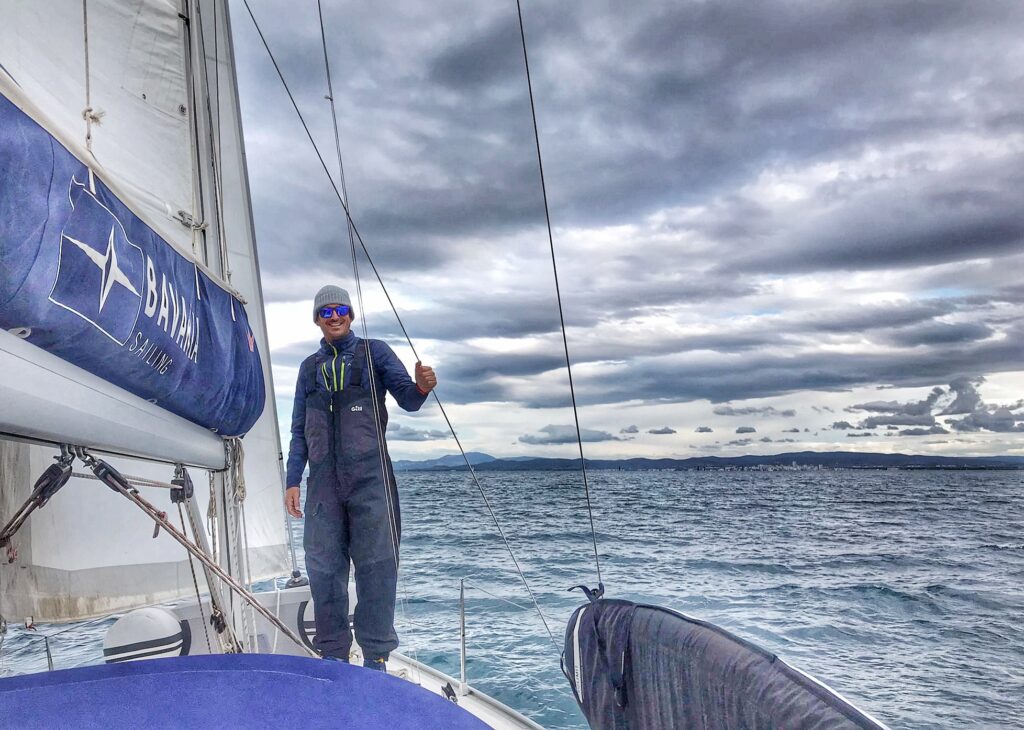
At All Winds Adventures, we’ve been where you are — from first-time charter nerves to full-circle sailing adventures in Croatia and Majorca. This guide brings together practical advice, personal experience, and the calm confidence that turns your first bareboat charter into a truly enjoyable adventure.
Do your research in advance
As with most things in sailing, preparation is key. Before my first charter, I spent evenings poring over charts and cruising guides for the region. I used Google Maps to get familiar with the coastline, downloaded electronic charts for my tablet, and refreshed some old-school chartwork skills.
I even followed the local weather forecasts for weeks in advance — planning imaginary routes as if I were already there.
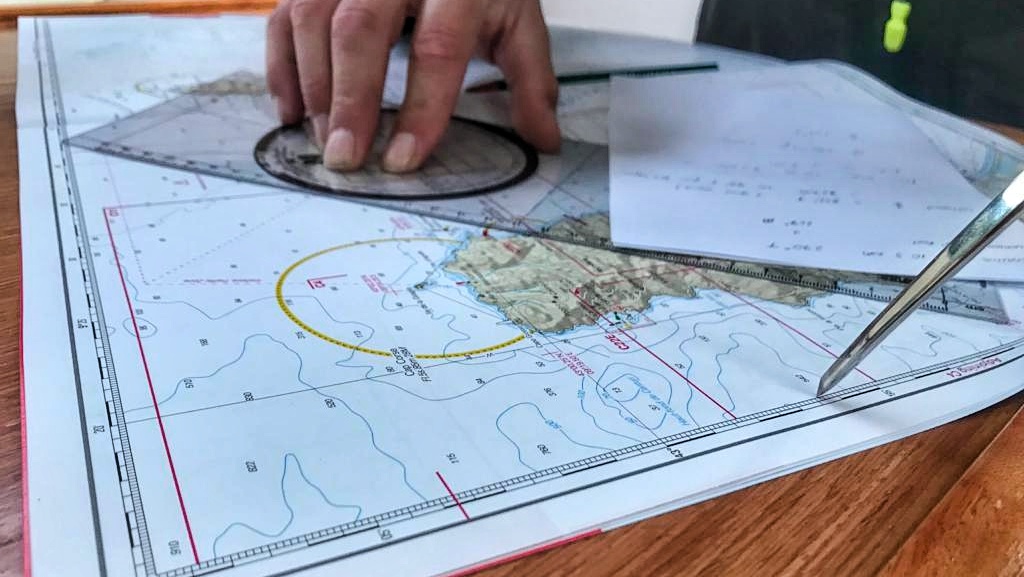
That research meant that when the week came, I already knew the lie of the land (and sea), where to find shelter if the weather changed, and what kind of distances made sense for a day’s sail.
Tip: Start familiarising yourself with the area you plan to sail weeks in advance. Learn local weather patterns, entry points, and possible anchorages.
Choose the Right Time to Charter
If you’re planning your first yacht charter, timing can make or break your experience.
Avoid July and August if possible — that’s high season in the Mediterranean. Marinas are crowded, anchorages packed, and you’ll often need to reserve berths in advance. It can quickly turn a relaxing sailing holiday into a stressful race for space.
Instead, plan your first sailing week in spring or autumn. The weather is often just as good, the marinas are quieter, and you’ll have the freedom to adapt your plan day by day — which is what true adventure is all about.
Get time on the water beforehand
Confidence comes from experience — and experience starts small.
Before heading off on a larger yacht, spend time sailing smaller boats where you live. Practice reefing, mooring, and coming alongside under different wind conditions.
If you’re based in Switzerland, join a coaching session. We’ll help you refine your skills and build the confidence you need to take the helm on your first charter. Check out our coaching or contact page and get in touch with us for more information.
🧰 All Winds Tip: The more tools you have in your sailing “toolbox,” the better you’ll adapt when things don’t go exactly to plan.
Get there early
Your holiday starts long before you cast off the lines.
Arriving early at the charter base lets you familiarise yourself with the marina, check out the local facilities, and — most importantly — relax before your check-in.
A calm skipper makes a good impression with the base staff, and that helps everything go smoother.
One option, ff available, book an early check-in. You’ll be ahead of the queue for the technical walkthrough and can possibly even take the boat out for a short sail that first afternoon. Coming back into a familiar berth builds confidence for the days ahead.
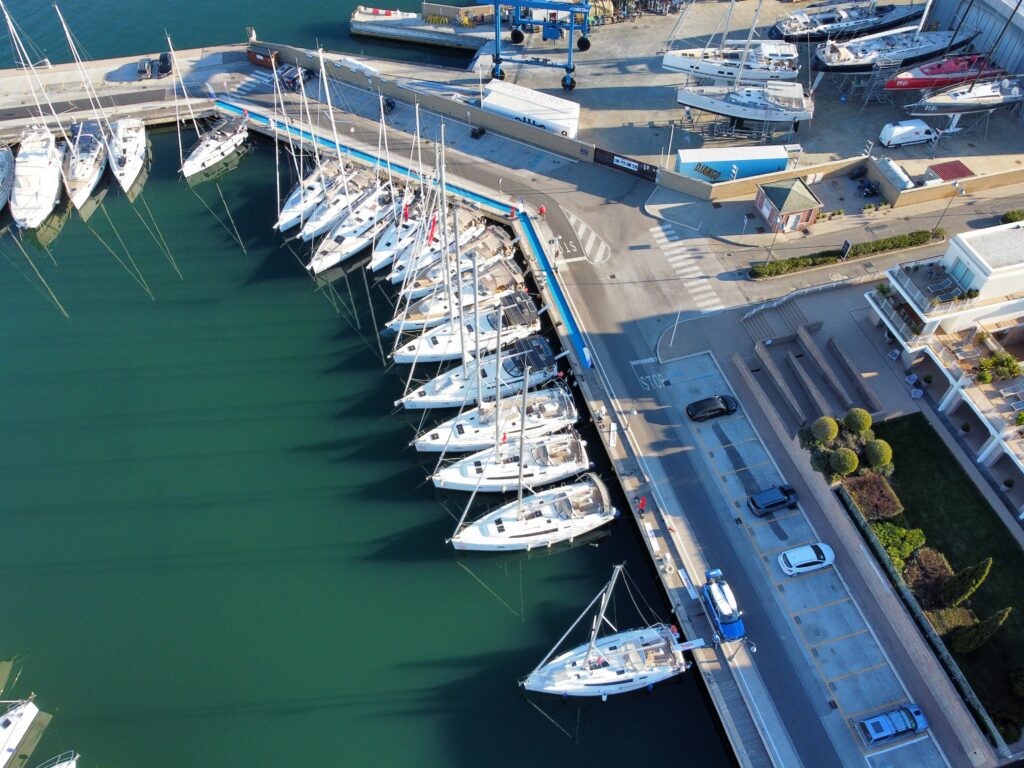
What to expect at check-in
You will get a time in advance to check in at the base. But you might be able to take care of the paperwork at the office before your official check-in time. Once the paperwork is done, the base staff will usually do the technical check-in as soon as your boat is ready.
You will have decided what extras you are taking in advance and you will have to pay for these at the beginning of the charter. Extras might include the following:
- Charter Pack (also known as Final Cleaning or Starter Pack and is usually compulsory.)
- Outboard Motor for dinghy
- Insurance
- Car parking in the Marina
- Bedding
- Cockpit cushions
- SUP
Sometimes the Charter Pack/Starter Pack includes some of the other options, but others don’t. Read carefully in advance what is included and what is extra.
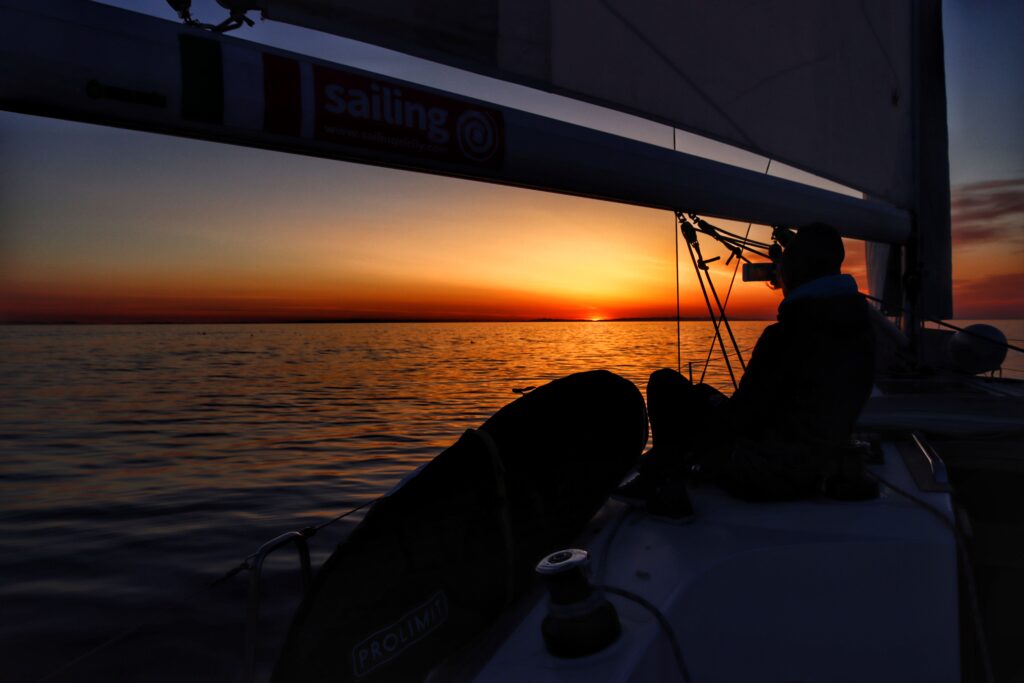
I personally believe it’s worth paying for the extra insurance/damage waiver if the charter company will give it to you. In some cases, they will only allow you to have the damage waiver (which in most cases only reduces your deposit) if they deem you to have had enough previous experience. Some companies sell a complete damage waiver (zero deposit) covering any damage to the boat, but usually, the waiver just reduces your damage deposit (and thus damage liability).
All your extras are charged to your credit card at check-in. Following this, they will put a hold on your card for the amount of the damage deposit. The safe return of the boat with no damage will result in this hold being removed from your card.
Technical Check-in
When your boat is ready, one of the base staff will do a complete walk-through of the boat with you. Usually, it’s just the skipper and maybe one other person who are on the boat for this. This part of the check-in is very important. Topics covered include, but are not limited to, the following:
- Start/Stop Engine
- Engine Battery/House Battery Master Switches
- Sea Cocks
- Gas shut off
- Life Jackets
- Life Raft
- Emergency Rudder
- Electrical Panel
- Toilet/Black Water Tank
- Water
- Diesel
- Engine oil check, spares
- Reefing Systems
There might be a full inventory taken of the boat at this point, which you will be expected to sign. In light winds, some companies will pull out the sails to check those. If you spot any damage or notice anything missing, this is the time to point this out. Any damage not mentioned in the protocol could be attributed to you when you bring the boat back.
Get Ready to Go
After the administrative and technical check-in, you can start to put your luggage on board and the holiday can begin. Many stay the first night in the home port and leave the following morning, but if you have done an early check-in it might be nice to go for a short sail and return to your dock. It is possible to leave and sail to another location after the check-in, but you will be arriving quite late and end up having to do your first mooring in a potentially crowded marina quite late in the day.
Leaving the dock
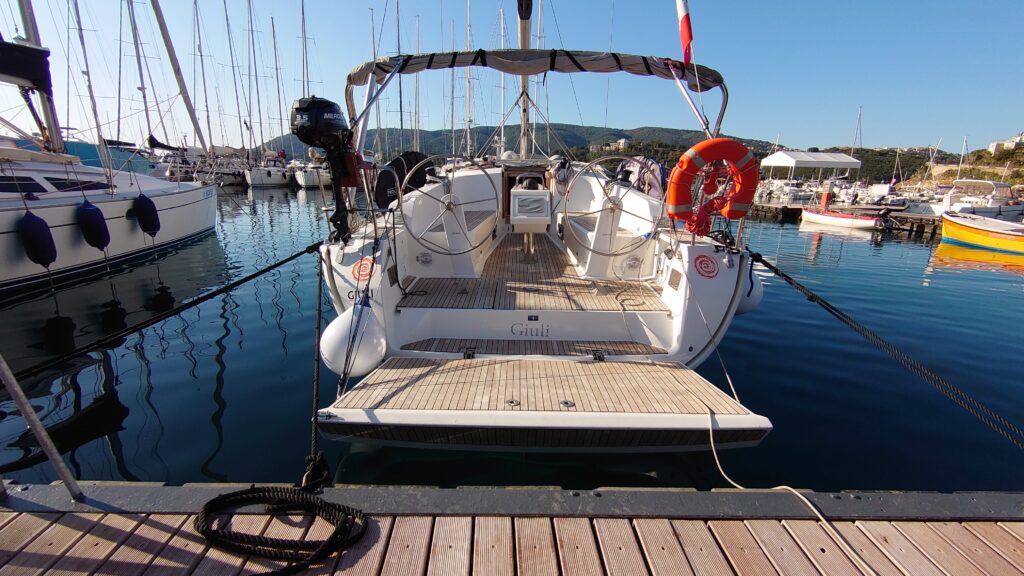
In the Mediterranean, most of the charter boats moor stern-to on the dock. If possible try to leave the dock for the first time when the wind is light. I suggest going to a quiet corner of the Marina to familiarise yourself with how the boat handles in close quarters at this point before doing anything else. Familiarising yourself with the boat at this stage will make your manoeuvres much less stressful later.
Practising close quarters, coming alongside and coming to a dock stern-to at the start of the Charter will give you an idea of any idiosyncrasies your boat may have. It also gives you a chance to explain to the new crew what their roles will be when doing the manoeuvres for real later on.
Bear in mind that wind can make getting in and out of your spot on the dock very difficult. Take time to think of your plan in advance and also think of what your options are if something goes wrong. It only takes a split second for the bow to be blown off the wind when you cast off the windward stern line. This situation can be compounded if you were to suddenly back up while the stern line is still in the water or use the bow thruster while someone is still holding onto one of the bowlines.
The first sail
Try to plan your first sail as quite a short one. On our first charter, we were lucky our boat was kept on a finger-berth rather than squeezed between other charter boats. This allowed us to leave, go for a short sail and return again after we finished the check-in without too much stress. The Marinas in Italy almost all have staff on hand who you can radio as you enter the harbour to come and help you with your lines as you arrive back in.
If sailing to a new harbour for your first sail, make it a short one and arrive there early. The earlier you get in, the fewer other boats you will have to deal with and the less chance that the first time you dock will be in a tight space. An early arrival allows you and your crew the chance to have a more relaxed first experience with docking in a new marina.
If you have done your research, it should be easy to pick out a location for the first sail. In high season, you will almost certainly have to try and reserve a berth at the marina you are heading to in advance.
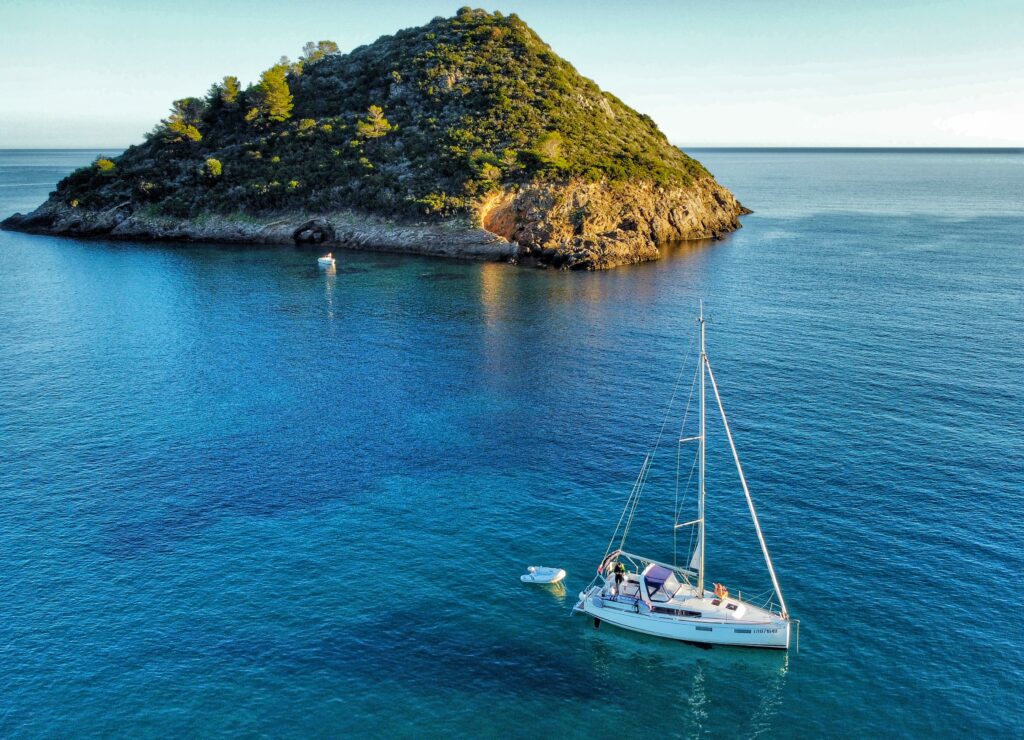
Follow the forecast
It’s good to keep a careful eye on the forecast for later in the week already at the very beginning. Most week-long charters really only involve 6 days of actual sailing. Unless you leave for your first sail directly after the check-in. It’s easy to sail a long way from the charter base in the first 4 days of the charter to suddenly realise that you now need to make up all that ground back upwind in 2 days on the way back. Keep an eye on the weather and plan to get back to your starting point comfortably on the last day.
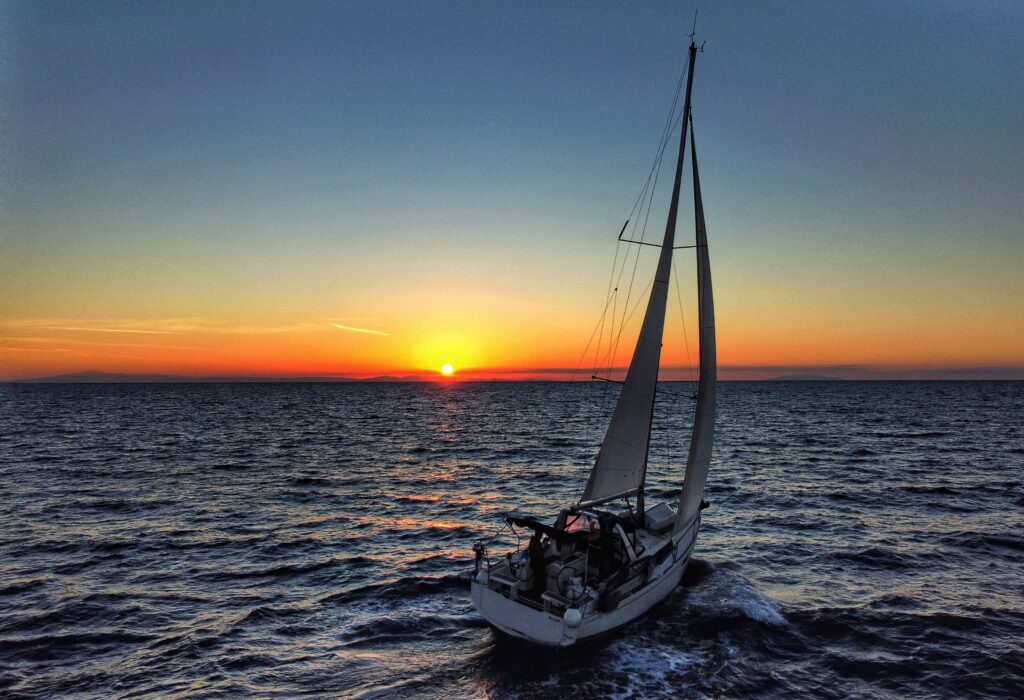
Returning the boat
Most charters run Saturday to Saturday, but boats usually need to be back at the base by Friday at 5 p.m. You’ll spend the final night on board before disembarking the next morning.
Before returning, fill your fuel tank and empty the black water tanks. Take note of the fuel dock layout when you leave on day one — it’ll make the return far easier.
Once refuelled, radio the marina or phone the base manager and ask for help with lines when docking. The staff are always happy to assist, and it ensures a smooth finish to your week.
Reap the Rewards
our first charter is more than just a holiday — it’s a step into a new way of experiencing the world. The feeling of freedom, the teamwork on board, and the rhythm of wind and water stay with you long after you’ve returned to shore.
With a little preparation and guidance, that first charter will feel less like a leap into the unknown and more like the start of a lifelong adventure.
Charter with All Winds Adventures
If you’re ready to start your own sailing story, All Winds Adventures can help every step of the way:
- Yacht Charter in Croatia and Majorca — Bareboat or with coaching support
- Sailing Coaching and Taster Sessions in Switzerland — Build confidence before your trip
- Skippered Coaching Weeks — Learn while exploring the best of the Mediterranean
Get in touch to plan your first sailing adventure or join one of our charter coaching weeks. We’ll help you feel confident, prepared, and free to enjoy what sailing is all about — being powered by nature, guided by the wind, and open to wherever adventure takes you.
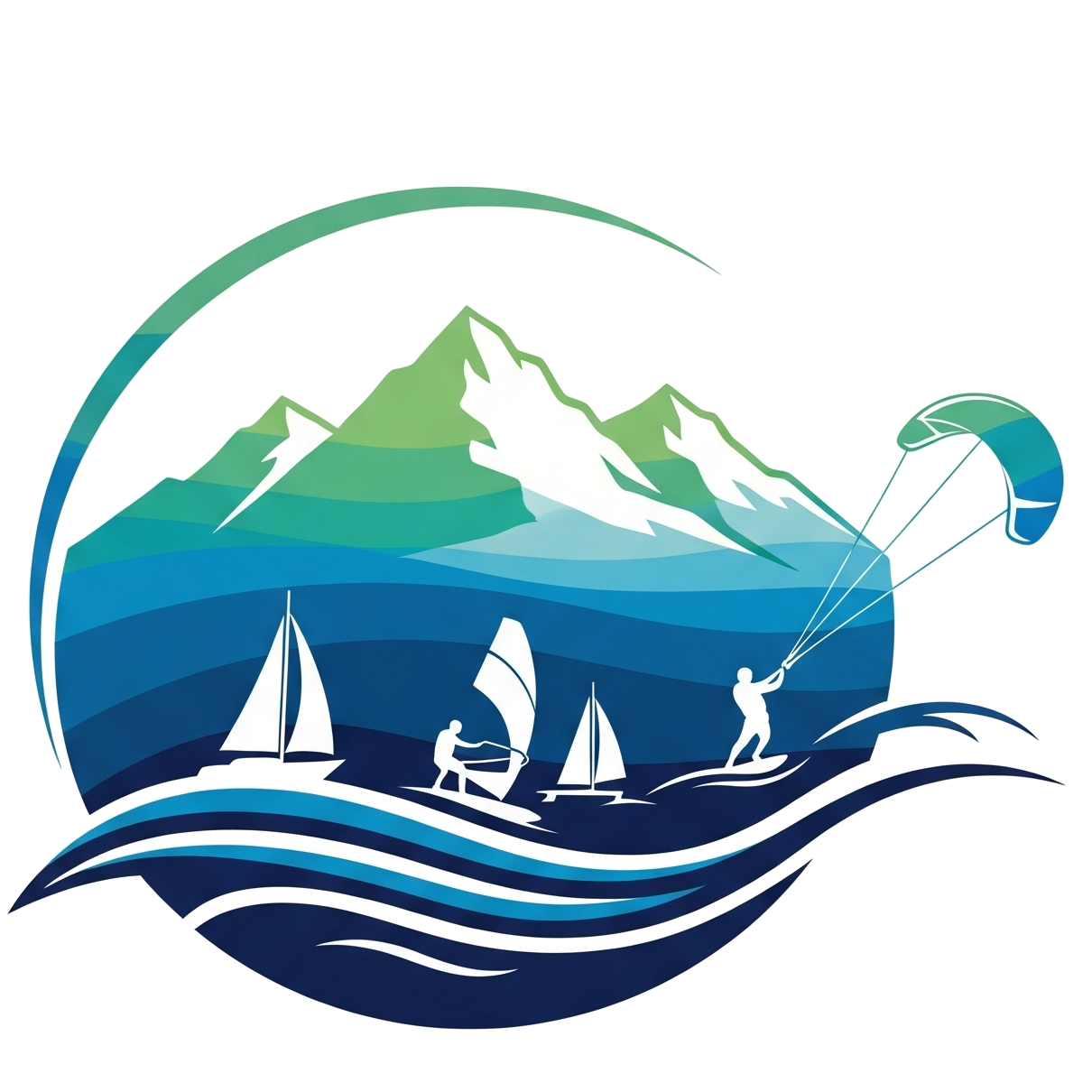
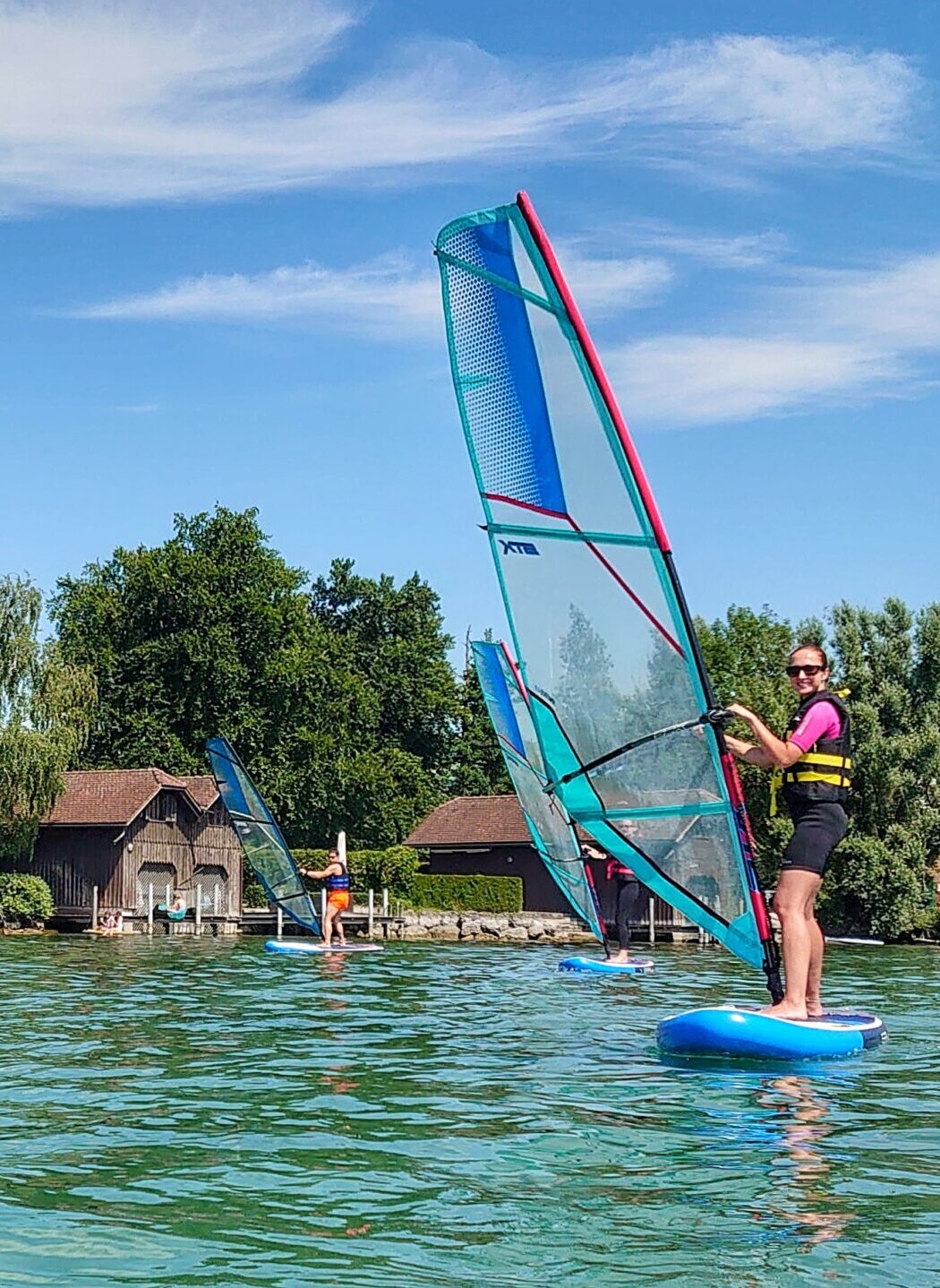

No responses yet